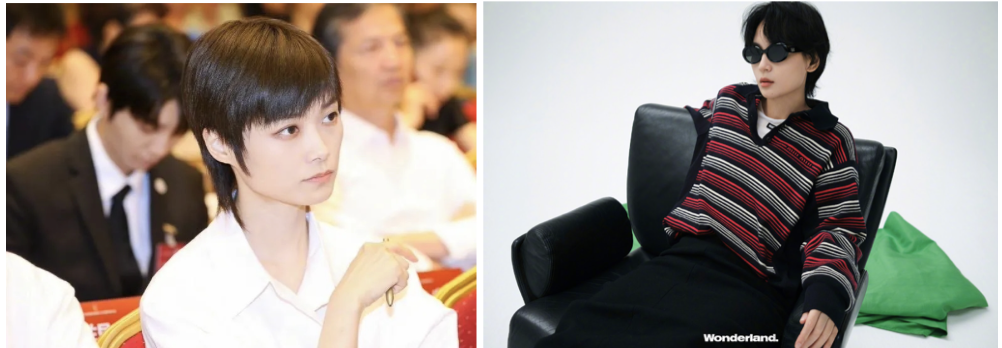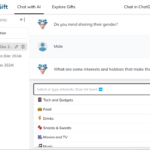
(G)I-DLE) – ‘Wife’ (Source: YouTube)
If we focus on fans and their appeals, like what they want to get or express from “Girl Crush”, we may also notice that most K-pop fans will not see themselves as fan of only one group, which means, they are travelers of the K-pop universe. In this circumstance, they fall in love from one group to another, looking for relevant values from them, gathering together and forming a strength that is hard to ignore. In response to the travelling feature in K-pop fandom, the term “crush” could also have the interpretation from the time perspective: fans get crushes on those girl groups, but they won’t stick to one, they love them momentarily and keep changing the objects to show their value in the long run.
“Girl Crush” is a part of the Korean Wave (Hallyu), which has had great impacts all over the world, and has also exerted influence on Chinese popular culture and social culture since it entered our context 30 years ago (Sun & Liew, 2019). From a transnational perspective, maybe we can extend the theme into relevant topics like cultural differences and acceptance, political attitudes, etc. For example, feminism is seen as exotic and mainly influenced by Western ideology in China, but the “Girl Crush” from Hallyu undoubtedly provides cultural proximity to the Chinese audience, so what changes will it make to our social acceptance of the whole movement? The queerness shown in “Girl Crush”, which was always a gray area in the Chinese context, has been a visible culture in K-pop fandom, what are the factors and the impacts behind it? For a long time, the Chinese government has been trying to build an influential culture that could build up citizens’ confidence and influence the world. What are the differences between these two cultures, and what can we learn from the Hallyu? These are all valuable questions waiting to be solved.
I think I should give a more specific description of queerness in the “Girl Crush” group since it’s part of the meaning of the term. I talked about Moonbyul’s performance earlier, but didn’t fully elaborate:
Moon’s performance also points to the queerness in “Girl Crush” K-pop group, which makes the style so popular in China. In mainland China, the government’s attitude towards the queer community is always seen as ambiguous, they won’t block queer content on social media, and they treat the community with the attitude “No Asking, No Mentioned, No Responding”. To avoid unnecessary troubles, like some aggressive strangers suddenly coming and insulting you when they search the content, queer community tend to use various forms to express their identity, K-pop is one of the forms. Just like Lady Gaga and Jolin Tsai, “Girl Crush” K-pop groups are also important to the queer community. However, one thing that makes it different is that the K-pop group seldom stands out and supports the queer community in public. So, as Donna said, fans’ participation has empowered the K-pop production of various meanings, and in “Girl Crush” K-pop, it is not only about feminism, but also queer sexuality. In Shin’s (2018) article, she mentioned female fans crossplay as BTS and cover their performance, especially the soft masculinity shown by some male stars, and tomboy-style female stars—whether it is fan practice or the idol company’s strategy, they all show non-binary sexuality of K-pop and its fandom. In this case, maybe Hallyu with such great power, will change what it means to be queer in Asian culture and promote social progress with other strong cultural powers.
Henry:
This has been a great discussion and sheds a lot of insight onto the political impact of this important K-Pop movement. I was struck while I was in China how many of my young female students knew and cared passionately about these groups, how many had developed interpretations about what they were saying through their music videos especially, and why their messages were so vital as resources for them.
I had been struck while I was there about the performance of hyper-femininity I was seeing on the streets of Shanghai, how often the women I saw were dolled up in ways that I see much more rare in the United States these days. I also was struck by how much those women who opted out of that system of gender performance stood out in this context. Some women seemed to be making conscious choices not to wear make-up, to wear more gender-neutral clothing which would not be out of place on an American college campus. This choice seems to me almost an act of courage, and it was in this context that I first encountered {G]Id-le as my point of entry into the Girl Crush movement. Strikingly, because of their positioning in the media industry, the female performers themselves rarely made these same choices in their presentation, though a song like “Tom Boy” did seem to speak to their fans who were carrying their self-empowerment much further into this space.
For the most part, the men I spoke with young and old seemed oblivious to these debates about gender that were taking place amongst women. For the most part, they claimed not to know [G]id-le or “Tom Boy.” When I showed the video to one man in his early 40s, he described the group as dressing like dominatrix which suggests how threatening (or kinky) their gender performance felt to him. It was this gap between how they were being read by women and men in Chinese culture which first interested me. This is what reminded me of the debates we used to have when I was in graduate school about the Madonna videos as they were coming out, as she embraced a more empowered view of feminism, as she both attracted and critiqued the male gaze, as she made more and more direct expressions of queerness and support for gay rights. Today we can see her mainstreaming certain ideas that were bubbling up from more underground groups like La Tigre and appropriating voguing as a subcultural practice from the NYC queer scene.
I am reminded of what John Fiske wrote about the young Madonna fans at the time: “The teenage girl fan of Madonna who fantasizes her own empowerment can translate this fantasy into behavior, and can act in a more empowered way socially, thus winning more social territory for herself. When she meets others who share her fantasies and freedom there is the beginning of a sense of solidarity, of a shared resistance, that can support and encourage progressive action on the microsocial level.” Retrospectively, we can see how Madonna helped pave the way for the Riot Grrls and how their street activism became third wave feminism. Could the Girl Crush movement have a similar impact in Korea and China?
References
Banet-Weiser, S. (2018). Empowered: Popular Feminism and Popular Misogyny. Duke University Press.
Fiske, J. (1989). Reading the popular. Routledge.
Kavka, M. (2020). Taking down the sacred: fuck-me vs. fuck-you celebrity. Celebrity studies, 11(1), 8-24. https://doi.org/10.1080/19392397.2020.1704369
Layoung, S. (2018). Queer Eye for K-Pop Fandom: Popular Culture, Cross-gender Performance, and Queer Desire in South Korean Cosplay of K-pop Stars. Korea Journal, 58(4), 87-113.
Mulvey, L. (1989). Visual and Other Pleasures. Palgrave Macmillan UK.
Sun, M., & Liew, K. K. (2019). Analog Hallyu: historicizing K-pop formations in China. Global media and China, 4(4), 419-436. https://doi.org/10.1177/2059436419881915
Biographies
Do Own (Donna) Kim is an Assistant Professor at the University of Illinois Chicago’s Department of Communication. She studies everyday, playful digital cultures and mediated social interactions. Her work examines boundary-crossing new media practices, such as around video games, virtual influencers, and Korean digital feminism. She focuses on hybrid contexts, norms and categories, and the notion of being human/artificial. Her work can be found in journals such as New Media & Society, International Journal of Communication, Mass Communication and Society, Proceedings of the ACM on Human-Computer Interaction, and Lateral: The Journal of Cultural Studies Association (forthcoming). Donna received her Ph.D. degree in Communication from the University of Southern California’s Annenberg School for Communication and Journalism. She is a Korea Foundation for Advanced Studies fellow alumna. Website: doowndonnakim.com | Twitter: @DoownDonnaKim
Ying Wang (Lenore) is a second-year master’s student in Journalism and Communication at Shanghai University. As a participant in various popular cultures, she explores cosplay, games and online fiction. Her research focuses on participatory culture, especially gender and sexuality in fandom in China.
Henry Jenkins is the Provost Professor of Communication, Journalism, Cinematic Arts and Education at the University of Southern California. He arrived at USC in Fall 2009 after spending more than a decade as the Director of the MIT Comparative Media Studies Program and the Peter de Florez Professor of Humanities. He is the author and/or editor of twenty books on various aspects of media and popular culture, including Textual Poachers: Television Fans and Participatory Culture, Hop on Pop: The Politics and Pleasures of Popular Culture, From Barbie to Mortal Kombat: Gender and Computer Games, Convergence Culture: Where Old and New Media Collide, Spreadable Media: Creating Meaning and Value in a Networked Culture, and By Any Media Necessary: The New Youth Activism. His most recent books are Participatory Culture: Interviews (based on material originally published on this blog), Popular Culture and the Civic Imagination: Case Studies of Creative Social Change, and Comics and Stuff. He is currently writing a book on changes in children’s culture and media during the post-World War II era. He has written for Technology Review, Computer Games, Salon, and The Huffington Post.






